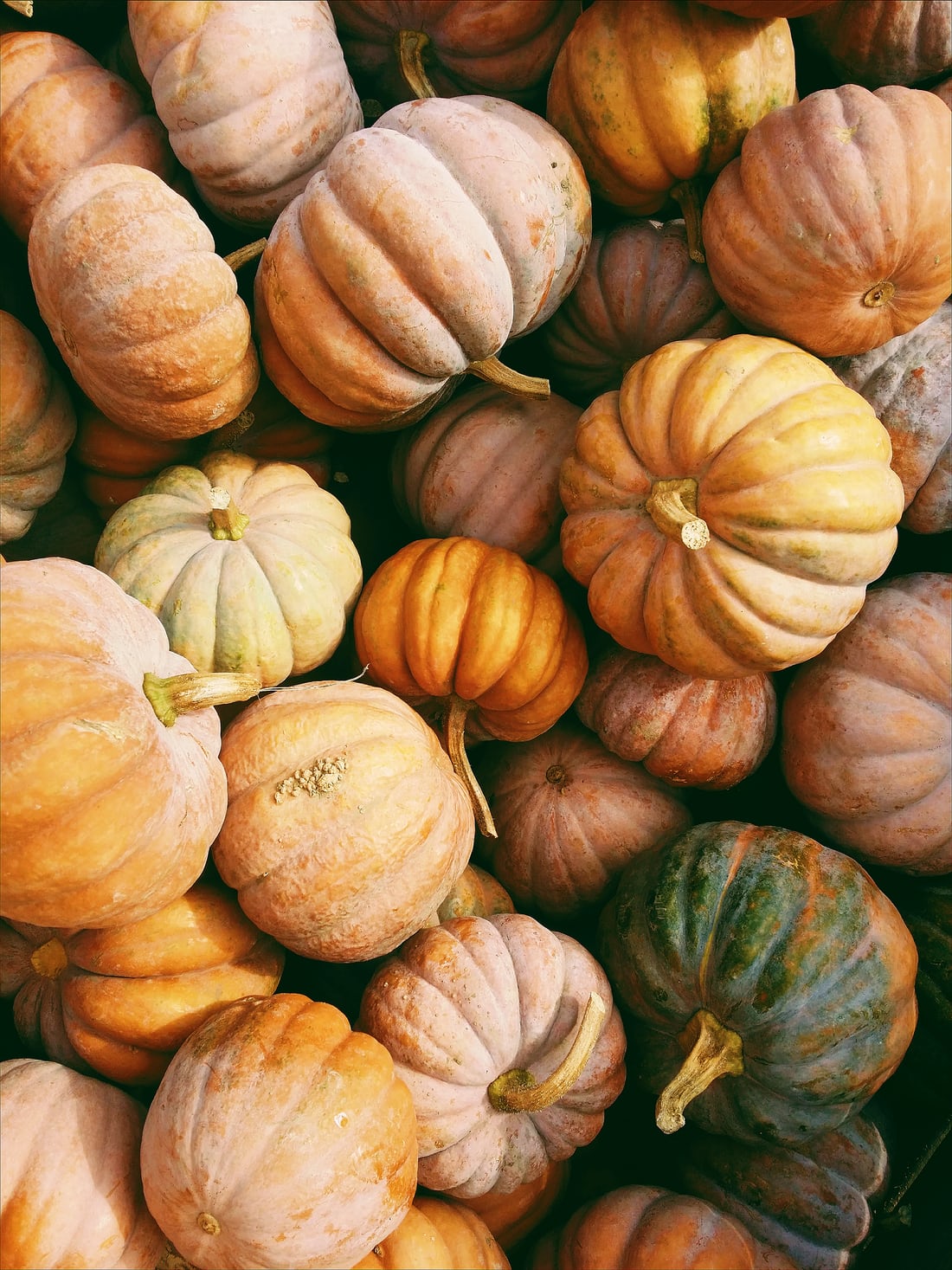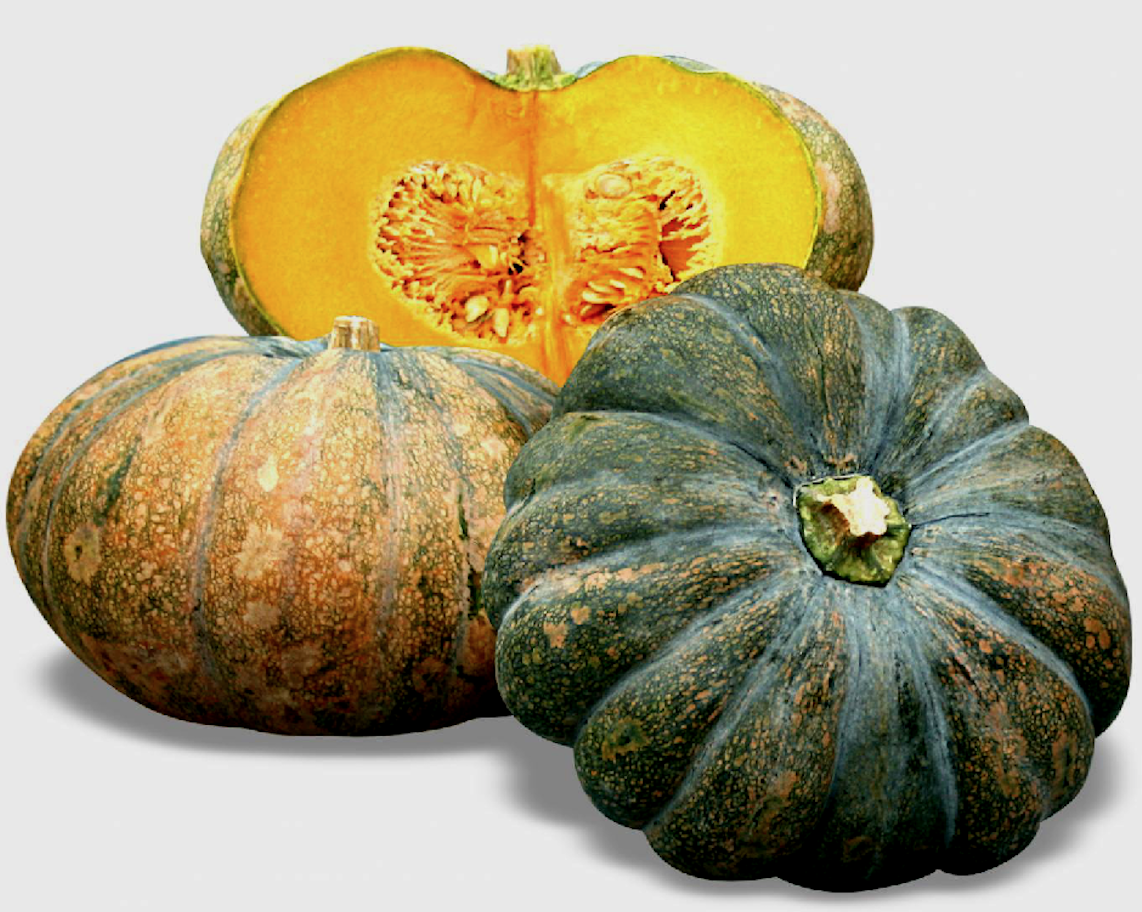
Description
A pumpkin is a cultivar of winter squash that is round with smooth, slightly ribbed skin, and is most often deep yellow to orange in coloration. All pumpkins are winter squash, mature fruit of certain species in the genus Cucurbita. Native to North America (north eastern Mexico and the southern United States), pumpkins are one of the oldest domesticated plants, having been used as early as 7,500 to 5,000 BC. Pumpkins are a warm-weather crop that is usually planted in early July. The specific conditions necessary for growing pumpkins require that soil temperatures 8 centimetres (3 in) deep are at least 15.5 °C (60 °F) and that the soil holds water well. Pumpkin crops may suffer if there is a lack of water or because of cold temperatures (in this case, below 18 °C or 65 °F). Soil that is sandy with poor water retention or poorly drained soils that become waterlogged after heavy rain are both detrimental. Pumpkins are, however, rather hardy, and even if many leaves and portions of the vine are removed or damaged, the plant can very quickly re-grow secondary vines to replace what was removed.
Agronomy practices for growing Gourds
- Soil Requirement
- Season
- When to Plant Pumpkin Seeds
- Method Of Propagation
- How to Plant Pumpkin Seeds
- Spacing
- Seed Rate
This commercial crop can thrive well on a wide variety of soils. Whatever, A soil with sandy loam along with good drainage power and all essential organic matter is supposed to be the best soil for pumpkins. Soil ph ranging between 5.5 to 7.5 is considered as the best ph for growing pumpkins
As kharif crop, seeds are sown from May to July and as a spring summer crop, sowing is done during February-March
Pumpkins can grow all around the year, where there is a good source of water is available. However, generally two crops of this vegetable can be obtained; in the time period of January to March and September to December.
Pumpkins are mainly propagated with the help of pumpkins seed.
Pumpkins seeds do not germinate in too cold temp. For planting Pumpkins, seeds should be sown directly on the main field. Planting on the raised bed encourages drainage to avoid the problem of constant wetness of Pumpkins roots which invites numbers of pest, insects, and diseases. Generally, this crop is cultivated mainly on hills and surrounding area. So, for planting pumpkins in such area, plant about 2 to 4 seeds per hill. Seed should be sown at about 2.5 depth for best growth. Also, after seedling pumpkins, they should be thin to 1 plant per each hill lately.
Planting them by keeping spacing about one meter, between the plants along with spacing rows about 1.5 to 2 meters is considered as best for growing pumpkins commercially.
Generally, about 2 kg of pumpkins seeds is sufficient enough for farming on one-hectare land to earn huge production.
Varieties

.svg)